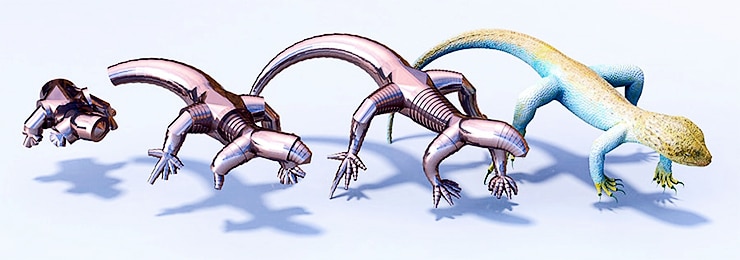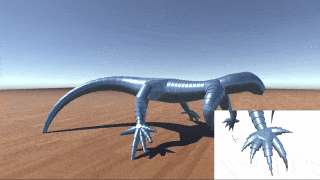Researchers have created a way to design telescoping structures that can twist and bend, which could allow the creation of robots that collapse themselves to make transport easier or stretch out to reach over large obstacles.
The researchers devised algorithms that can take a suggested shape that includes curves or twists and design a telescoping structure to match. They also created a design tool that enables even a novice to create complex, collapsible assemblies, outlined in a new paper on the research.
The design possibilities range from something as practical as a rapidly deployable shelter to fanciful creations, such as a telescoping lizard with legs, head, and tail that readily retract.

“Telescoping mechanisms are very useful for designing deployable structures,” says Keenan Crane, assistant professor of computer science at Carnegie Mellon University. “They can collapse down into really small volumes and, when you need them, are easily expanded.”
The researchers explored a number of designs in simulation, including shapes mimicking lizards and other animals.
But most telescoping devices are similar to a pirate’s telescope—a set of straight, nested cylinders. In this study, Crane, along with Stelian Coros, assistant professor of robotics, and Christopher Yu, a doctoral student in computer science, set out to find out what kinds of telescoping shapes are possible and to develop computational methods for designing and fabricating those shapes.
The researchers explored a number of designs in simulation, including shapes mimicking lizards and other animals.
They found that spherical, ring-shaped, and helical telescopes are possible. Once a designer selects the desired curve for a structure, their algorithms can devise a telescoping structure that can extend or contract without bumping into itself and that includes no wasted space between the nested pieces. They also devised connectors that would combine several such telescopes into a larger assembly.

The researchers devised algorithms that can take a target shape that includes curves or twists and design a telescoping structure to match. They also created a design tool that enables even a novice to create complex, collapsible assemblies
Though the nested sections can have a variety of cross-sections, they focused on those with circular cross sections, just like the pirate’s spyglass. Once extended, they noted, the circular cross sections make it possible for each of the curved segments to rotate, adding 3D twists to what otherwise would be 2D shapes.
Another was a robotic arm and claw that could emerge from a compact cylinder and reach up and over obstacles.
The simulations also enabled the researchers to analyze how the telescoping devices might move if they were actuated.
Watch new rescue robot grow and twist like a vine
“We found that characters with telescoping parts are capable of surprisingly organic movements,” Coros says.
The National Science Foundation supported this research. The researchers will present their findings at the SIGGRAPH Conference on Computer Graphics and Interactive Techniques.
Source: Carnegie Mellon University



